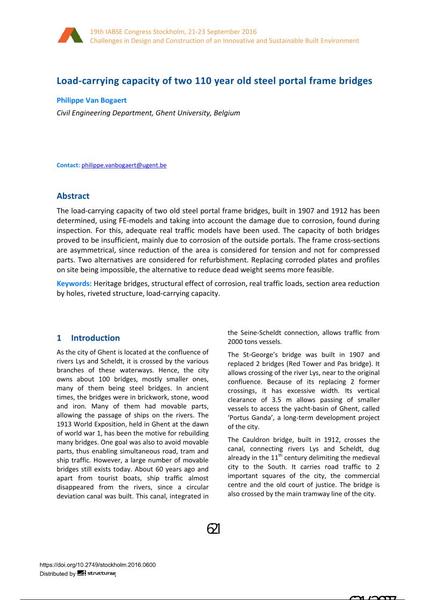Load-carrying capacity of two 110 year old steel portal frame bridges

|
|
|||||||||||
Bibliographic Details
| Author(s): |
Philippe Van Bogaert
(Civil Engineering Department, Ghent University, Belgium)
|
||||
|---|---|---|---|---|---|
| Medium: | conference paper | ||||
| Language(s): | English | ||||
| Conference: | IABSE Congress: Challenges in Design and Construction of an Innovative and Sustainable Built Environment, Stockholm, Sweden, 21-23 September 2016 | ||||
| Published in: | IABSE Congress Stockholm, 2016 | ||||
|
|||||
| Page(s): | 621-628 | ||||
| Total no. of pages: | 8 | ||||
| Year: | 2016 | ||||
| DOI: | 10.2749/stockholm.2016.0600 | ||||
| Abstract: |
The load-carrying capacity of two old steel portal frame bridges, built in 1907 and 1912 has been determined, using FE-models and taking into account the damage due to corrosion, found during inspection. For this, adequate real traffic models have been used. The capacity of both bridges proved to be insufficient, mainly due to corrosion of the outside portals. The frame cross-sections are asymmetrical, since reduction of the area is considered for tension and not for compressed parts. Two alternatives are considered for refurbishment. Replacing corroded plates and profiles on site being impossible, the alternative to reduce dead weight seems more feasible. |
||||
| Keywords: |
riveted structure Load-carrying capacity Heritage Bridges structural effect of corrosion real traffic loads section area reduction by holes
|
||||


